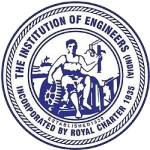Study of methodology for removal of Arsenic contamination from public water supply projects-West Bengal perspective.
Abstract
Water supply projects utilize surface water, sub-surface water and ground water as sources. The most economical alternative is to use ground water as source, because it will not require construction of water treatment plant for surface or sub-surface based water supply schemes, which involves high capital cost. However for areas which are far away from the river, it is not viable to utilize river water for source for such areas ground water is the only preferable source to feed the water supply scheme. If the area receives substantial rainfall throughout the year the ground water reserve in the aquifer is easily replenished and hence abstraction of ground water through production tubewell shall be a sustainable approach to provide drinking water supply to the population. As ground water is generally abstracted from confined aquifer, the water quality of ground water is free bacteriological contamination. However the main evil in ground water is chemical contamination. One of the most significant chemical contaminant in ground water is Arsenic, which is a cumulative poison in human system. Prolonged intake of arsenic laden water in relatively higher concentration, results in manifestation of toxic effects of arsenic in human body, various health related problems develop due to arsenic poisoning which is broadly termed as “Arsenicosis”. Arsenic contamination in ground water is observed across the globe, the problem is very wide spread in West Bengal. In this paper a time tested methodology for effective removal of arsenic from drinking water is discussed. The methodology incorporates oxidation followed by coagulant assisted precipitation, and finally applying adsorption technique using polishing agent for removal of residual arsenic so that the treated water has arsenic below detectable limit. The method is easily implemented at the field and the operation and maintenance of the plant is less. The process has been indigenously developed for field application for public water supply schemes and provides potable water to the population in reliable quality.
Downloads
References
IS 10500-2012, “Indian Standard Drinking water Specification”, Bureau of Indian Standards, New Delhi.
IS 456 – 2000, “Plain and Reinforced Concrete-Code of Practice”, Bureau of Indian Standards, New Delhi.
IS 3370 (Part-2) 2009, “Code of Practice Concrete Structures for Storage of Liquids, Part 2: Reinforced Concrete Structures”, Bureau of Indian Standards, NewDelhi.
P.Mandal et.al. 2016, “Disposal Problem of Arsenic Sludge Generated During Arsenic Removal from Drinking Water”, International Conference on Solid Waste Management, 2015, Science Direct, Elsevier, pp 943-949.
Copyright (c) 2021 Pronoy Roy Chowdhury

This work is licensed under a Creative Commons Attribution 4.0 International License.
I/We agree with the provision of the Bye-Law 118 of The Institution of Engineers (India) which states that copyright of each paper published in Institution Journal or Annual Technical Volume in full or in Abstract at its centres shall lie with the Institution.

